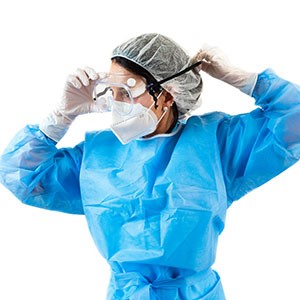Donning and Doffing PPE: Proper Wearing, Removal, and Disposal

Photo by Getty Images
Donning means to put on and use PPE properly to achieve the intended protection and minimize the risk of exposure. Doffing means removing PPE in a way that avoids self-contamination. For example, avoid skin and mucous membrane contact with potentially infectious materials, and chemical and biological agents.
Follow strict donning and doffing procedures, such as observer-monitored methods and hot, warm, and cold zones, for highly infectious agents. The following are important considerations and tips:
- The exclusion zone (or hot zone) is the area with actual or potential contamination and the highest potential for exposure to hazardous substances.
- The contamination reduction zone (or warm zone) is the transition area between the exclusion and support zones. This area is where responders enter and exit the exclusion zone and where decontamination activities take place.
- The support zone (or cold zone) is the area of the site that is free from contamination and that may be safely used as a planning and staging area.
- Remove PPE before entering any non-clinical areas including restrooms, breakrooms, and administrative areas.
- Always wash hands with soap and water before wearing and after removal of PPE.
- Dispose of all PPE in appropriate waste containers.
